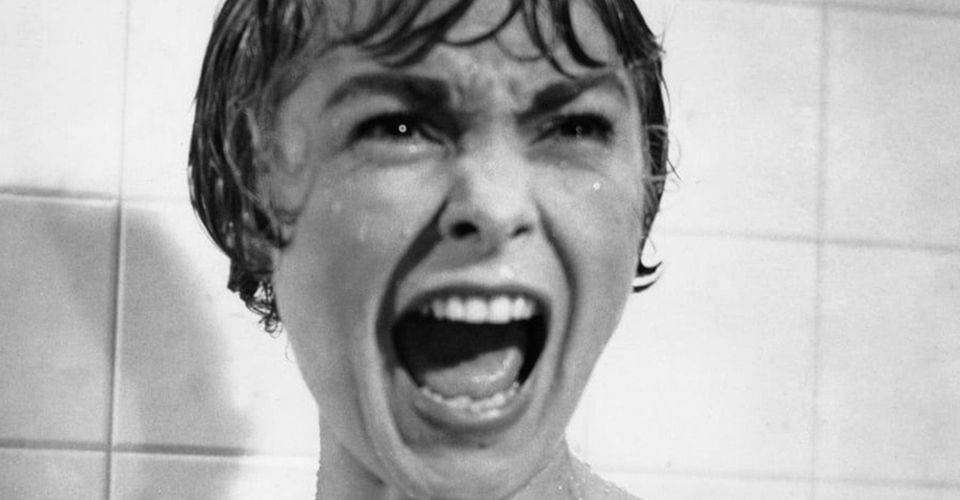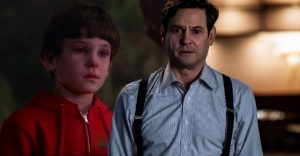She Wouldn’t Even Harm A Fly: 10 Behind-The-Scenes Facts About Psycho (1960)

When he unleashed Psycho on the moviegoing public in 1960, Alfred Hitchcock told exhibitors not to let anyone in once the film had begun. This was a measure to preserve the impact of the midpoint twist, and to ensure that anyone watching the movie would be able to follow its unique, subversive, game-changing structure from beginning to end.
Widely regarded as the first slasher, Psycho revolutionized the thriller genre. It also changed Hitchcock’s career as he’d avoided plot twists and grisly subject matter prior to adapting Robert Bloch’s novel. So, here are 10 fascinating details from behind the scenes of Psycho.
10 The Shower Scene Took A Week To Shoot

The shower scene in Psycho only lasts for 45 seconds in the final cut of the movie, but it reportedly took seven days of shooting before Alfred Hitchcock was happy with it.
Hitchcock and his team filmed 70 different camera angles, and then Hitchcock slaved over the scene in the edit before he was happy with every single cut in the sequence.
9 Psycho Could Have Been Repurposed As An Episode Of Alfred Hitchcock Presents

When Paramount was pressuring Hitchcock about censoring Psycho and threatening to pull out of their distribution deal, the director considered repurposing the film as a two-part episode of his anthology series Alfred Hitchcock Presents.
The first part would have ended with Marion’s murder, which ended up being the midpoint of the movie. Psycho’s crew was mostly made up of crew members from the TV series.
8 Hitchcock Liked Bernard Herrmann’s Score So Much That He Doubled His Salary

When post-production on Psycho was underway, Alfred Hitchcock saw the tremendous effect of Bernard Herrmann’s music on the movie’s terror (the director said that Herrmann’s score was responsible for 33% of the film’s impact) and decided to double the composer’s salary after the fact.
Hitchcock wasn’t wrong about Herrmann’s score. The shower murder is easily the most memorable scene in the movie, and everyone remembers the violin screech from the score. Even crazier, Hitchcock originally wanted the shower murder to play without music, and Herrmann had to beg him to try it with a score.
7 Censors Tried To Cut The Shot Of The Toilet Flushing

The censors in 1960 had a pretty tight stranglehold on filmmakers’ artistic freedom. When grisly slasher Psycho was sent to the censors, they even wanted to cut the shot of the toilet flushing.
Hitchcock managed to fight these censors as the shot was integral to the plot, with the torn-up paper proving Marion’s stay at Bates Motel. Keeping this shot made Psycho the first movie in history to depict a flushing toilet on-screen.
6 Simon Oakland Nailed His Final Monologue In One Take

The psychiatrist’s monologue at the end of the movie is crucial because it’s filled with exposition that explains Norman Bates’ psyche and the unseen events of the plot.
The monologue has a lot of medical details and emotional nuance. By all logic, it should’ve taken forever to shoot. However, actor Simon Oakland nailed it on the first take.
5 Hitchcock Put Norma Bates’ Corpse In Janet Leigh’s Dressing Room To Test How Scary It Was

When the prop replica of Norma Bates’ corpse was made up, Hitchcock tested how scary it was by putting it in Janet Leigh’s dressing room. Then, he waited for Leigh to return to the room and listened out for how loud she screamed when she saw the corpse there.
4 Paramount Forced Hitchcock To Make Psycho On The Cheap

The executives at Paramount hated the novel that Psycho was based on and didn’t have much faith in a film adaptation. In order to get the studio to agree to fund the movie, Hitchcock agreed to make it on the cheap.
It wasn’t super low-budget like William Castle’s movies or schlocky B-movies, but its $800,000 price-tag was a fraction of what North by Northwest cost a year earlier. Hitchcock also took a pay cut in exchange for a box office percentage, which worked out greatly in his favor when the movie was a hit.
3 The MPAA Tried To Forbid The Use Of The Term “Transvestite”

In the movie’s final summary of Norman Bates’ condition, the term “transvestite” is used. However, the MPAA tried to forbid the film from using the word. The board backed down when screenwriter Joseph Stefano proved that the term was actually used in the world of clinical psychology at the time.
2 Leslie Nielsen Was Considered For The Role Of Sam Loomis

When the roles in Psycho were being cast, the actors considered for the role of Sam Loomis included Rod Taylor, Robert Loggia, and even Leslie Nielsen. Before delivering comedic dialogue totally straight in Airplane!, Nielsen was a respected dramatic actor.
Meanwhile, before Janet Leigh was chosen to play the lead role of Marion Crane, Lana Turner and Piper Laurie were considered for the part.
1 Hitchcock Went To Extreme Lengths To Hide The Twist Ending

Alfred Hitchcock kept Psycho’s big twist ending a secret from the actors. He withheld the ending from the cast until they actually shot it and they needed to know what happened to be able to perform the final scenes. Keeping the actors clueless about the true nature of Norman Bates meant that their performances weren’t informed by information that their characters didn’t know.
After discreetly buying the film rights to Robert Bloch’s novel, Hitchcock bought as many copies of the book as he could find in an extreme effort to hide the ending from moviegoers.
About The Author


















